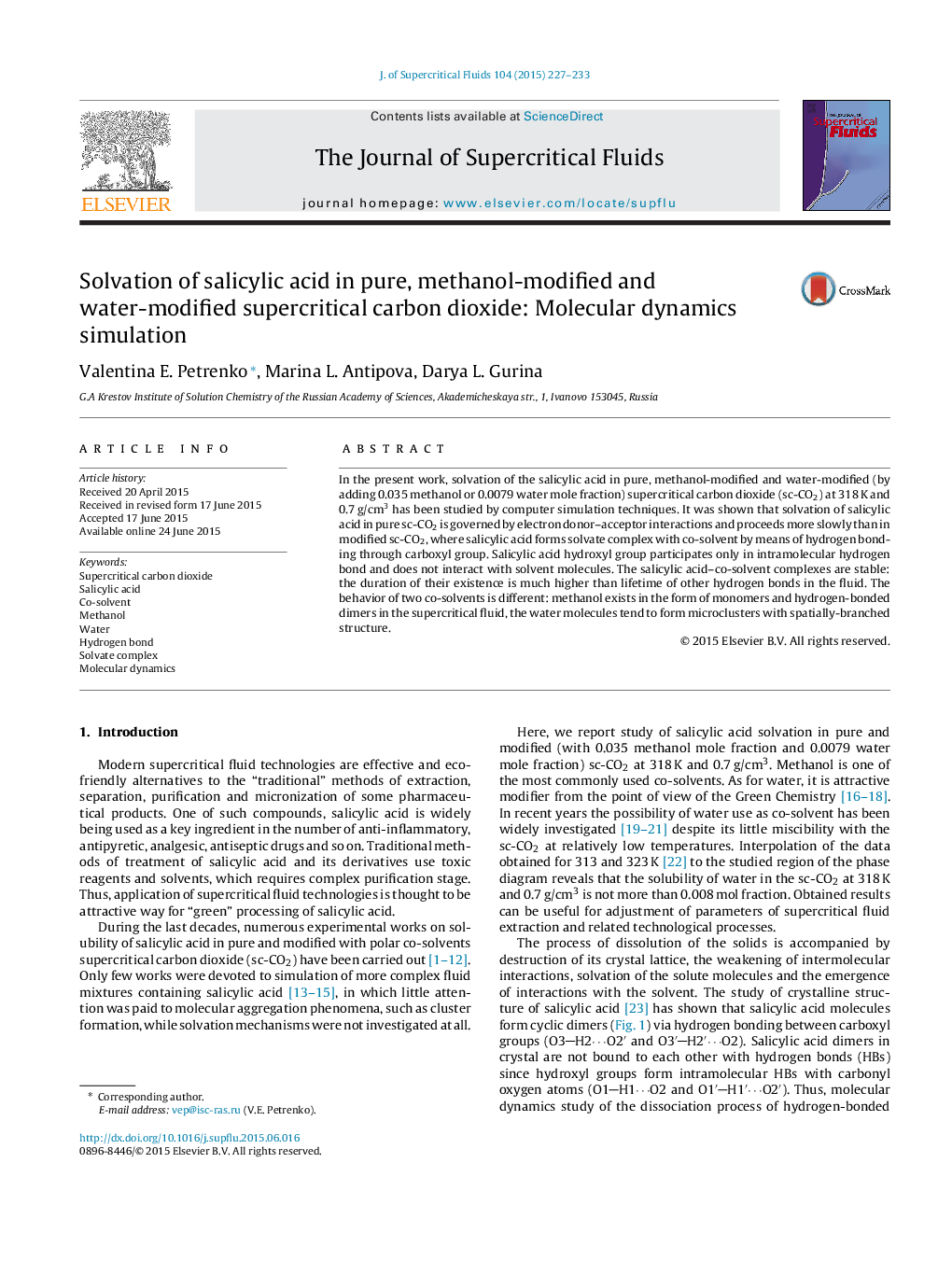| Article ID | Journal | Published Year | Pages | File Type |
|---|---|---|---|---|
| 230127 | The Journal of Supercritical Fluids | 2015 | 7 Pages |
•Salicylic acid in pure, methanol- and water-modified supercritical CO2 is studied.•Molecular dynamics simulation is performed.•Salicylic acid forms stable solvated complexes with co-solvents.•Solvate complexes of salicylic acid with both co-solvents are formed similarly.•Water (unlike methanol) is self-associated in the supercritical CO2.•In methanol-modified fluid solvation process is slower than in water-modified one.
In the present work, solvation of the salicylic acid in pure, methanol-modified and water-modified (by adding 0.035 methanol or 0.0079 water mole fraction) supercritical carbon dioxide (sc-CO2) at 318 K and 0.7 g/cm3 has been studied by computer simulation techniques. It was shown that solvation of salicylic acid in pure sc-CO2 is governed by electron donor–acceptor interactions and proceeds more slowly than in modified sc-CO2, where salicylic acid forms solvate complex with co-solvent by means of hydrogen bonding through carboxyl group. Salicylic acid hydroxyl group participates only in intramolecular hydrogen bond and does not interact with solvent molecules. The salicylic acid–co-solvent complexes are stable: the duration of their existence is much higher than lifetime of other hydrogen bonds in the fluid. The behavior of two co-solvents is different: methanol exists in the form of monomers and hydrogen-bonded dimers in the supercritical fluid, the water molecules tend to form microclusters with spatially-branched structure.
Graphical abstractFigure optionsDownload full-size imageDownload as PowerPoint slide
